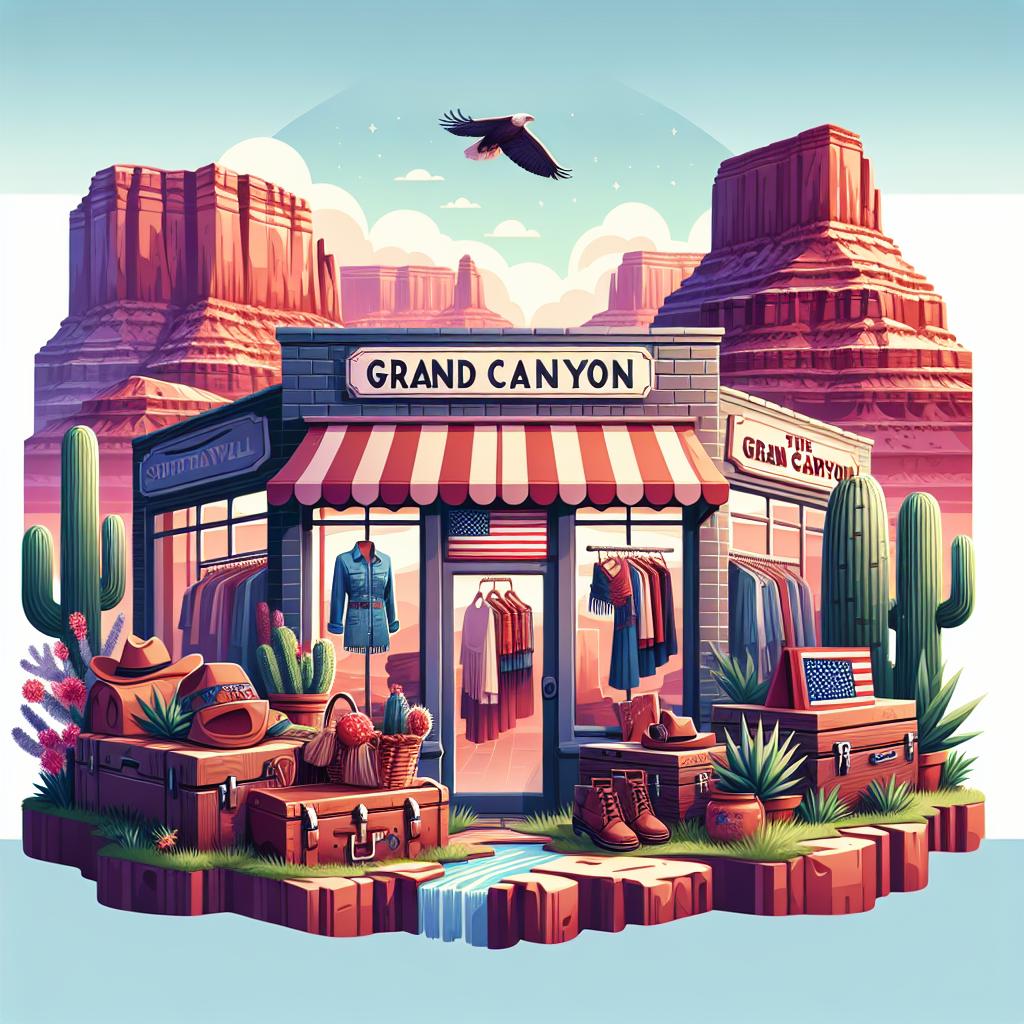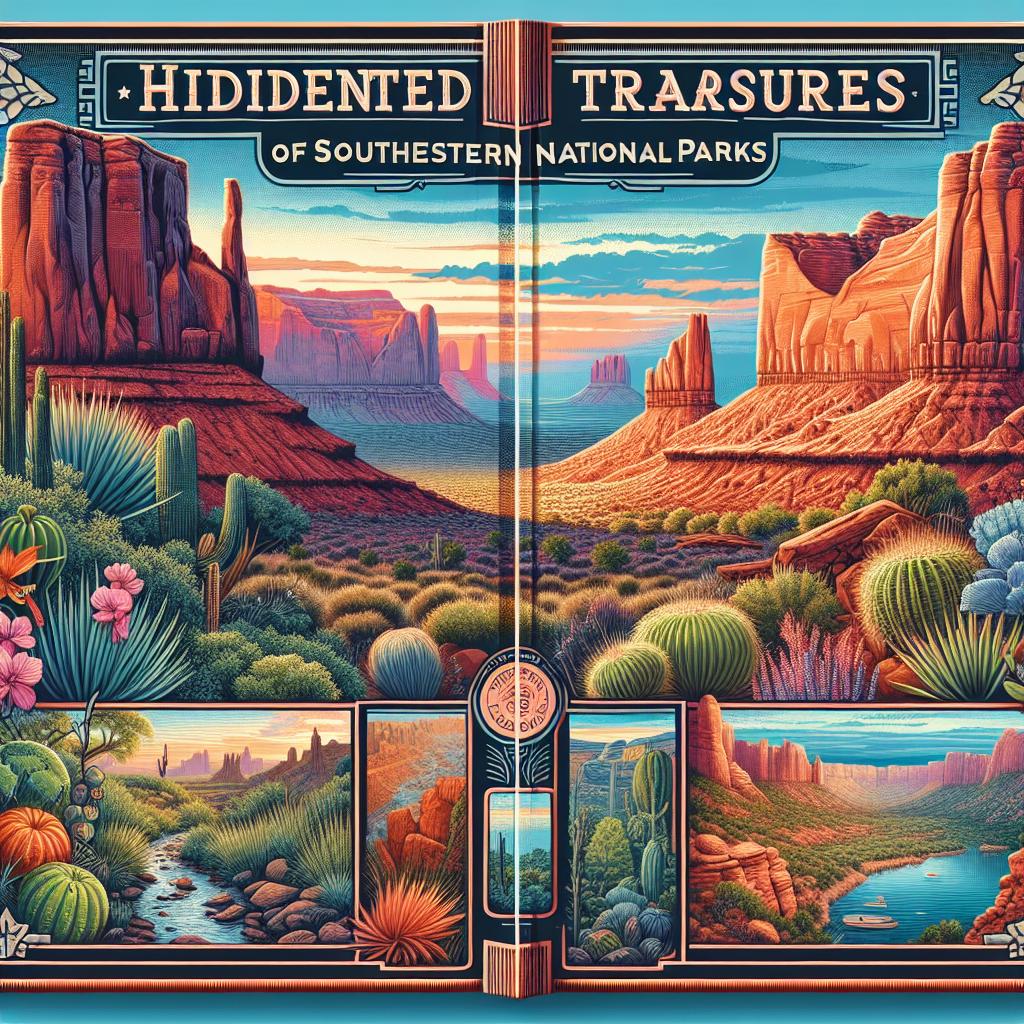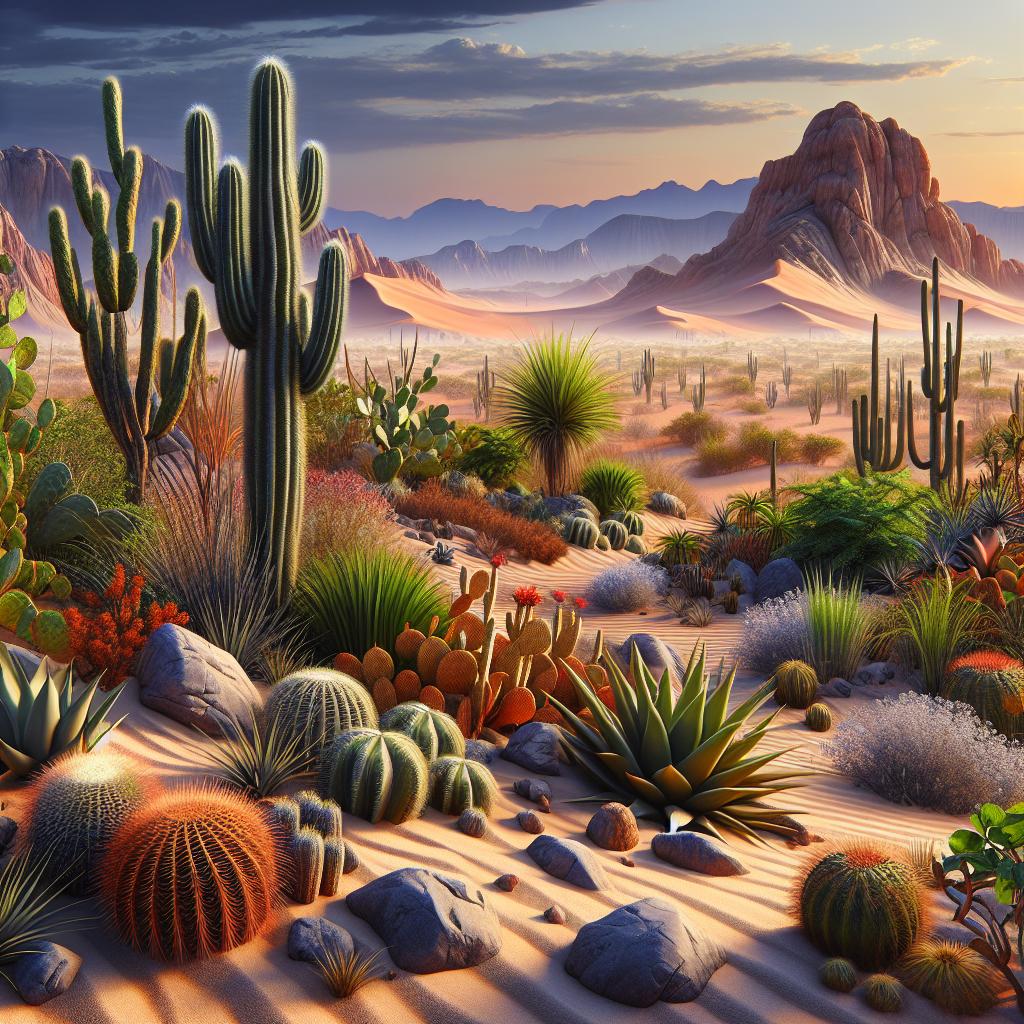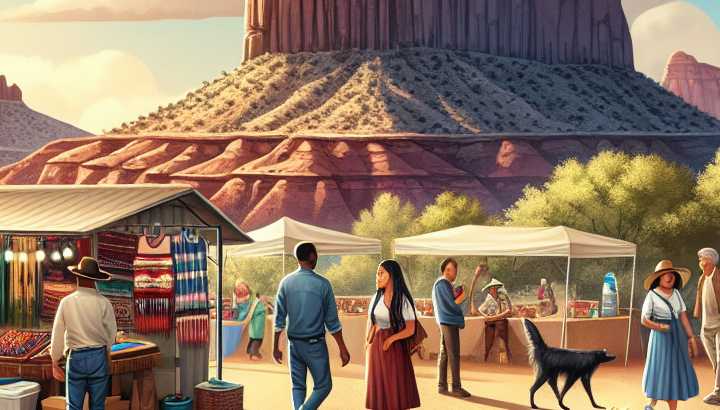Exploring the Natural Beauty of the Southwest

1. Majestic Landscapes of the Grand Canyon
Title: A Jaunt into the Jaw-Dropping Jaws of the Grand Canyon
Traveling often feels like stepping into an ostentatious painting where Mother Nature has taken every liberty with her brushstrokes. Enter the Grand Canyon, where she must have been showing off something fierce. Sling on your hiking boots and don the Indiana Jones hat because it’s time to venture into the breathtaking depths of this majestic marvel where you’ll feel your own insignificance against its grandiosity and subsequently, feel oddly validated.
Imagine 277 miles of raw, unadulterated nature, meticulously carved over millions of years by the fury of the Colorado River. If geological history was a Broadway show, Grand Canyon surely steals the spotlight, dancing nimbly across epochs, tempting onlookers to join in.
Right off the bat, beyond the golden grass and sagebrush, you’ll notice those signature sandstone walls, towering higher than a skyscraper, towering higher than your mother-in-law’s expectations of you on thanksgiving leave. Painted in hues of russet, blush, and sienna – it’s Nature’s attempt at modern abstract art, a sight that has brought stronger men than you to tears.
On any day, you can capture deceptive serenity within the Canyon’s gaping mouth. But don’t let the calm fool you: There’s an undeniable wild mystique ready to throw surprise parties you’d rather RSVP a resounding “No” to. Tumbling rocks, flash floods, and the occasional mountain lion – life here will really keep you on your toes, or keeled over holding them, depending on how spry you are!
But enough about the captivating dangers—on to the gloriously adventurous. Whether you choose to hike the Bright Angel Trail, take a mule down into the South Rim, or sail into heart-stopping rapids with a white-water rafting trip, you’ll earn your chutzpah badge in gold. Special shout out to the vertigo sufferers who brave the glass-bottom Skywalk and see far too much of the Canyon’s bottom for comfort. Relax! No one’s fallen in… lately.
As the sun dips below the Canyon, watch the fiery canvas of a southwestern sunset unfurl.
“It was found in what is now known as Gold Canyon, by a company of Mormon emigrants _en route_ to California”
~ Dan De Quille, A History of the Comstock Silver Lode & Mines
The play of colors will leave you speechless or very verbose if you’re a seventeen-year-old poet with a broken heart. Come nightfall, the party continues above as the stars wrestle for your attention in their sparkling sequined gowns.
For the introverts (I see you and I am you), Grand Canyon’s extreme isolation gifts you a peaceful silence. It’s a soothing ointment for city-sore ears, broken only by the bustling winds or an audacious rock daring to roll down the slopes. And for my extroverts, the echo at the Grand Canyon seems to laugh right along with you, multiplying your joyous whoops by a thousandfold.
Intermingling with this geological wonder’s spellbinding past and present is a rich tapestry of indigenous culture and history. This area has long been nurtured by Native American communities, holding deep significance and keenly telling stories of their ancestors. So, no, Rick from Pasadena, it was not aliens!
To sum up, the Grand Canyon is not just another pretty Face(book) post. It’s an eruption of awe-inspiring landscapes, an insightful muse for the contemplative, an adrenaline-packed rollercoaster for thrill-seekers, an open-air museum, and so much more.
Indeed, the Grand Canyon doesn’t just make an impression—it whacks you upside the head with a grandiosity mallet and leaves an indelible mark on your travel-savvy soul. Lastly, remember: hydration is happiness. And pictures – or in the Grand Canyon’s case – it didn’t happen!
Read More: 1. Majestic Landscapes Of The Grand Canyon

2. Hidden treasures of southwestern national parks
Title: “Bold, Beautiful & Bewildering: The Hidden Treasures of Southwestern National Parks!”
WARNING! This piece is a travel-spoiler for adventure enthusiasts and natural beauty aficionados alike. If breath-taking landscapes, charming creatures, and ancient echo-filled canyons sound like your kind of party, then buckle up, get your hiking boots on, and don’t forget sunscreen, ’cause we’re heading southwest!
Southwestern National Parks, God’s wild western playgrounds, are a trove of natural wonders and hidden treasures. It’s the equivalent of Narnia, minus the wardrobe and mythical creatures, but with added majestic moose and cavorting coyotes.
The first stop on our treasure hunt, the Grand Canyon – No, you Einstein’s, it’s not a ‘hidden’ treasure, but it’s got a secret up its monumental sleeve—The Havasu Falls. Nestled in the heart of the Havasupai Indian Reservation, this azure water wonder taunts gravity as it plunges over red cliffs into Havasu Creek. Behind its Instagram-perfect curtain of sapphire, there lies a hidden grotto. No, the pirates didn’t hide their treasure here, but the adventurous souls are definitely rewarded with a goosebump-inducing exploration.
Next up, we sneak into Utah, home of the mystical Zion National Park. Treading lightly between vermilion cliffs, swaying grasses whisper the park’s secrets. Your map might showcase Angels Landing and Riverside Walk, but the real gem lies off the grid. It’s a place so clandestine you’d think it’s enrolled in a witness protection scheme. We introduce you to the Subway, a semi-secret slot-canyon awash with mossy boulders, emerald pools, and ancient rock formations that put any city subway system to shame. Only accessible by permit, this is a one-way ticket to paranormal activity—minus the horror, plus the excitement.
Don’t hang up your adventure boots just yet.
“She had been cashier to Parks’s, the big butchers in Brentford, and pretty she had used to look in the glass case”
~ Ford Madox Ford, No More Parades
We’re not done. Scampering off to New Mexico, we meet Carlsbad Caverns National Park, further below the surface. Known as the “Grand Canyon with a roof,” Carlsbad’s belly is crammed full of stalactites and stalagmites that’d put any Gothic cathedral to shame. The park’s true treasure is the Bat Flight Program. As dusk bleeds into darkness, witness the bewitching exodus of nearly 400,000 fluttering creatures. Nothing screams wild more than a black bat-cloud against a painted desert sunset.
For our final stop, let’s dive deep into the belly of the beast—The Big Bend National Park in Texas. This lonely, beautiful beast slumbering by the Rio Grande hides a lush, vegetation-rich womb called The Ross Maxwell Scenic Drive. This drive will make you forget you’re in the heart of a desert, as it’s bursting with diverse flora and fauna, geological formations, and over 450 bird species. Yes, Big Bird did consider retirement here.
Whether you’re searching for serenity, solitude, or a severe test of survival skills, the hidden treasures of the Southwestern National Parks are waiting. They’re calling all adventurers, nature-lovers, and those wishing to take a break from the humdrum, to come and explore.
So squeeze into your Indiana Jones hats, lace up your boots, roll up your trail maps, and don’t forget to whisper the perfect parks nerd hymn—“I want to explore you like a National Park, slowly, intensely, and leaving no path untraveled.”
Read More: 2. Hidden Treasures Of Southwestern National Parks

3. Biodiversity and ecosystems of the Southwest desert.
Title: “A Sarcastic Stroll Through The Sizzling Southwestern Deserts: A Paradise of Piquant Peculiarities”
Alright, explorers, we need you to douse yourself in sunscreen, grab a gallon of water (or two), and put on the most fashionable wide-brimmed hat you own. It’s time to embark on a fantastic voyage through one of Mother Nature’s most misunderstood masterpieces – the hot, harsh, yet horticulturally heavenly ecosystems of the Southwest desert.
First things first, biodiversity isn’t a term synonymous only with tropical rainforests or the Great Barrier Reef. No siree, our seemingly sparse Southwestern desert is also a sizzling hot pot of creative evolution, leaping out of every sand dune and sneaky cactus.
Most people have a mental picture of roping tumbleweeds, scraggly yucca plants, and desolate dust storms when they think of desert biodiversity. Still, our Southwest desert ecosystem is a living, breathing, scorching testament to nature’s toughness and resilience.
Ladies and gentlemen, meet the sun-frazzled actors starring in our desert drama. Let’s start with the plants, who are the genuine, unsung heroes of this survival saga. Representing an eco-fashion statement of sorts, many desert plants have adapted to extreme conditions by producing a wax or hair-covered surface, reducing water loss.
Then we have the cacti, which, despite their prickly personalities, are nature’s water hoarders, storing vast quantities of water in their sponge-like interiors. Ah! And let’s not forget about the legendary Joshua tree, which isn’t really a tree but a colossal yucca, which learned to grow like a tree.
“A sacerdotal order, the rock wall of _Sh_í’ah Islám in that land, was paralyzed and discredited; its mujtahids, the favorite ministers of the hidden Imám, were reduced to an insignificant number; all its beturbaned officers, except for a handful, were ruthlessly forced to exchange their traditional head-dress and robes for the European clothes they themselves anathematized; the pomp and pageantry that marked their ceremonials vanished; their fatvás (sentences) were nullified; their endowments were handed over to a civil administration; their mosques and seminaries were deserted; the right of sanctuary accorded to their shrines ceased to be recognized; their religious plays were banned; their takyihs were closed and even their pilgrimages to Najaf and Karbilá were discouraged and curtailed”
~ Unknown, Unknown
Sounds deceptive, we know, but it’s pure genius!
Next, let’s acknowledge our scaly friends. Take the desert tortoise, for instance—this guy’s a potion of pure stubbornness, resistant to the scorching sun, freezing cold, and even prolonged droughts. Then there’s the Gila monster, no, not some Lovecraftian horror, but a gaudy, chunky lizard with a venomous personality. Sorry, we meant venomous bite.
Rounding out our freaky fauna are the insects, because who doesn’t love a good, spine-tingling crawl-fest among millipedes and scorpions? These tiny souls represent a vast ecosystem in miniature, becoming dinner for bats, birds, and reptiles that brave the sun-blasted wilds.
And finally, thanks to the Southwest desert, we can enjoy one of nature’s most soothing nocturnes – the call of the coyote. Underneath the canopy of the sparkling desert sky, these night shift hustlers give every desert night a touch of eerie beauty.
The Southwest desert’s ecosystem is a perfectly synchronized ball, a tough love ballet where every predator and prey, every plant, insect, and weather cycle all work together. It’s not just sand and heat; it’s a life-teeming canvas painted in shades of scorching sunsets and cold moonlight.
So come on folks! Let’s toast to our impeccably tough and resourceful Southwest desert, an ecosystem that puts the ‘wild’ into wilderness. Enduring, adapting, and thriving amidst aridity and adversity, it’s just showing off! No wonder it’d give Bear Grylls a run for his money!
So there you have it: the Southwest desert, where the sun’s a constant spotlight, the critters are prickly, and the plants are fabulous survivors. No place for the faint-hearted, but definitely a haven for admirers of biodiversity and saguaro cacti!
This just goes to show folks, amidst the scorching sand dunes and relentless heat, life doesn’t just survive, it flourishes! Each organism, in its bizarre, beautiful way, stands as a bulwark against the heat and dry atmosphere, proving that nature is full of surprises, quirks, and miracles!
Read More Here: 3. Biodiversity And Ecosystems Of The Southwest Desert.
